Overview of Storing Leftover Smoothie
When I blend up a nourishing smoothie, I often find myself with more than I can drink in one sitting. Not wanting to waste those nutritious leftovers, I’ve learned some handy tips for keeping them fresh. Smoothies are packed with nutrients, so proper storage is key to maintain their nutritional value and benefits.
Refrigeration is my go-to method for short-term storage. I pour my leftover smoothie into an airtight container—glass is my preference to avoid any funny tastes. I make sure to fill it to the top to minimize the air exposure, which can degrade the smoothie’s healthy qualities.
For longer storage, I turn to my freezer. Here’s a quick table summarizing these methods:
| Method | Container Type | Duration |
|---|---|---|
| Refrigeration | Airtight glass container | Up to 24 hours |
| Freezing | Ice cube trays or bags | Several weeks |
I’ve learned that freezing smoothie batches transforms them into ice cubes that I can later pop into a blender for a quick and easy refreshment. It’s like meal prepping but for my diet smoothie routine.
Remember, while these methods extend the life of your smoothie, they are not immortal. It’s crucial to enjoy those smoothie leftovers in a timely fashion to ensure you reap all the healthy rewards they have to offer.
Choosing the Right Container
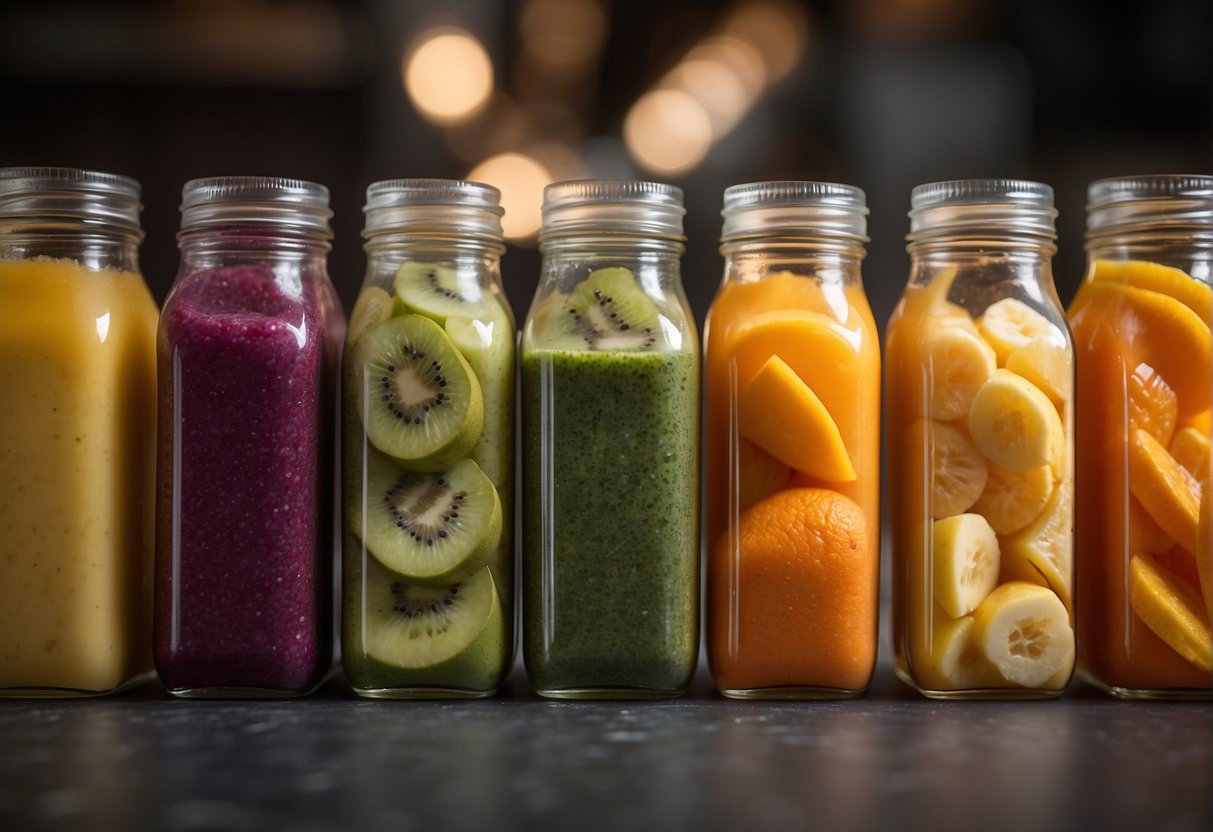
When I store my leftover smoothie, finding the right container is crucial to maintain its freshness and taste. I’ve learned that an airtight seal and the material of the container can make a significant difference.
Benefits of Airtight Containers
Airtight containers are my go-to for leftovers because they keep out air, which can cause oxidation and spoilage. Oxidation can ruin the brilliant color and fresh taste of my smoothie, and I definitely don’t want that. By using an airtight container, I lock in the flavor and nutrients, ensuring that my smoothie stays as delicious as when I first made it. It also means I can store it a bit longer, either in the fridge or freezer, which helps a ton when I’m prepping ahead.
Glass vs. Plastic Containers
In my kitchen, I have both glass containers and plastic containers, but I reach for glass when it’s time to store my smoothie. Why? Glass is non-porous and doesn’t absorb flavors or smells; plus, I find it easier to clean. Most of my glass jars are mason jars, which are perfect because they come with a tight seal, and they’re BPA-free. On the other hand, plastic containers are lightweight and less likely to break. When I use plastic, I make sure it’s BPA-free and freezer-safe, especially if I plan to store my smoothie in the freezer. Both have their pros and cons, but for taste and health, glass is my trusted choice.
Preparing Smoothies for Storage

When I plan to store my smoothies, it’s important that I prepare them correctly to keep them tasting fresh. The way I mix my ingredients and the steps I take to prevent oxidation can make a big difference in how my smoothie will save.
Making Smoothie in Batches
I like to make my smoothies in batches, especially when I’m prepping meals for the week. Batch-making is simple; I just multiply my smoothie recipe accordingly. I ensure that I have enough ingredients like fruits, greens, and liquids for the entire batch. For consistent taste, I measure the ingredients for each batch carefully. This approach saves me time and keeps me stocked with ready-to-go nutrition.
Adding Preservatives to Prevent Oxidation
Oxidation is the enemy when it comes to storing smoothies. It can cause my smoothie to separate and lose its vibrant color. To prevent this, I add natural preservatives like lemon juice that are high in vitamin C. A little squeeze goes a long way in keeping my smoothie looking and tasting fresh. In recipes that can handle the tanginess, lemon juice works doubly as a flavor enhancer and an antioxidant.
Refrigeration Techniques
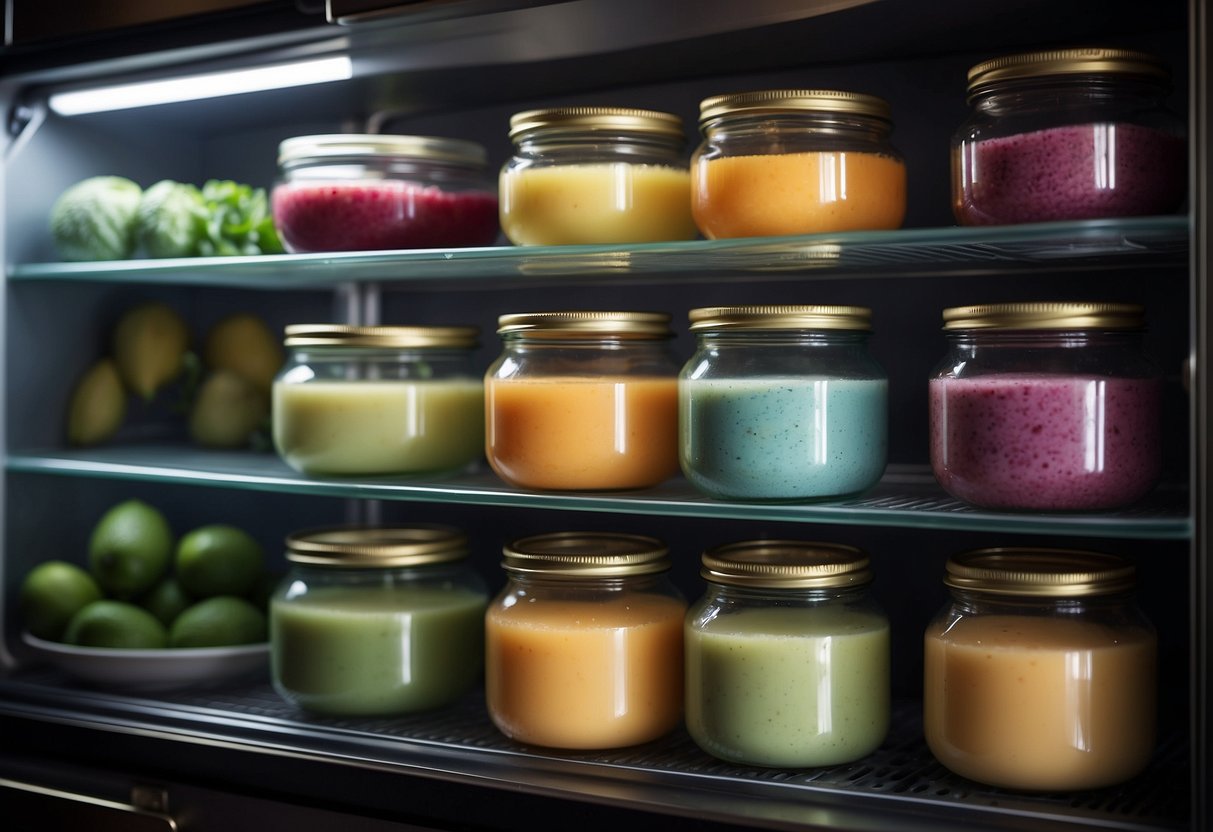
When I need to keep my leftover smoothie fresh, I turn to my trusty refrigerator. Proper refrigeration techniques are crucial for maintaining the taste and nutritional value of the smoothie.
Short-Term Storage
For short-term storage, I make sure my smoothie is in an airtight container, like a mason jar. This helps keep out excess air that can cause oxidation. I’ve learned that it’s best to fill the container to the brim to minimize the amount of air trapped inside. According to Joyfully Mad, giving the smoothie a good shake before drinking it again is also a key step. If I plan on drinking my smoothie within a day or so, keeping it in the fridge is the way to go, ensuring it stays cool and fresh.
The Role of Temperature in Preservation
Temperature plays a significant role in preserving the freshness of my smoothies. I aim to keep my fridge temperature at around 40°F (4°C), which is the recommended setting to maintain shelf life and food safety. A cooler temperature without reaching the freezing point is ideal to keep my smoothie as fresh as possible when I’ll be consuming it within 24 to 48 hours. Maintaining a consistent cooling environment within the refrigerator helps me avoid spoilage and nutrient degradation, guaranteeing a refreshing drink every time.
Freezing and Thawing Methods
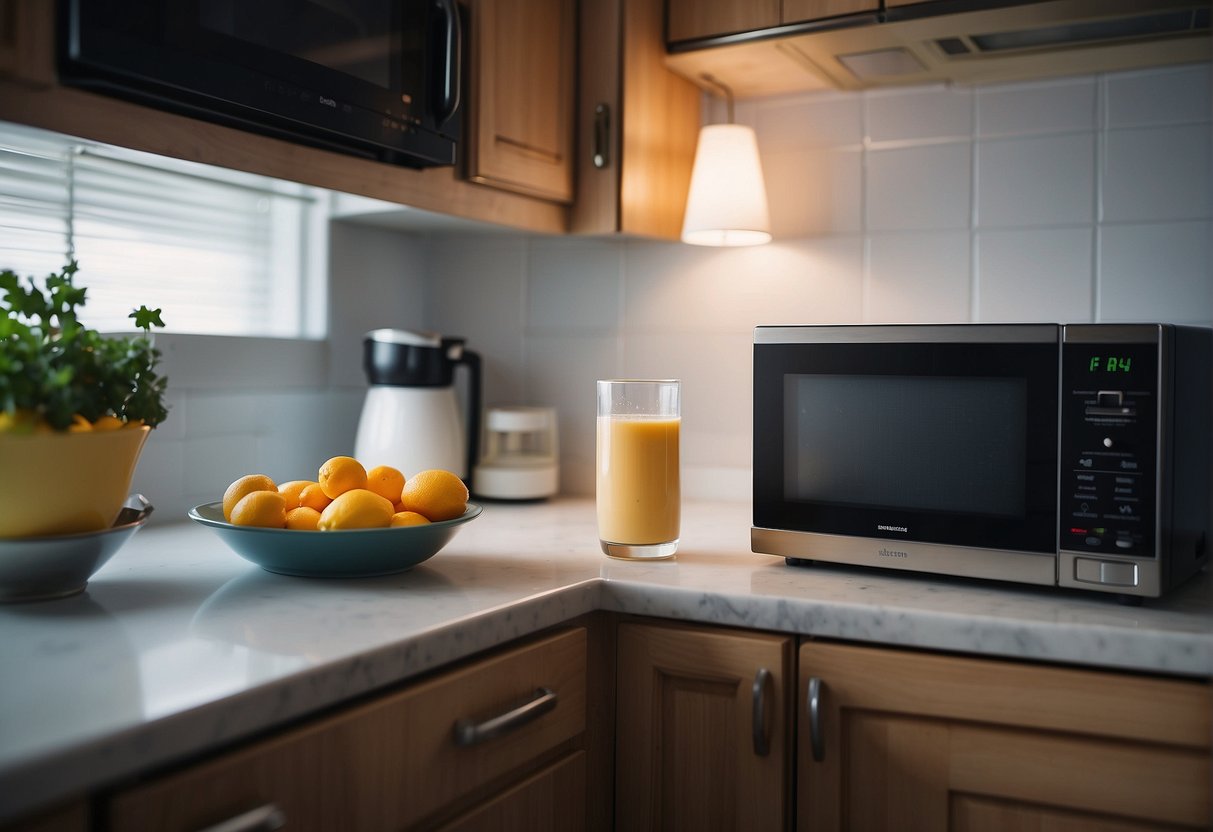
When I want to extend the life of my smoothies, freezing is my go-to method. It’s simple and efficient. For me, the process of thawing is just as important to maintain the taste and consistency of the smoothie.
How to Freeze Smoothies
To freeze my smoothies, I use freezer-safe containers or silicone ice cube trays for portion control. The key is to leave some room at the top for expansion—about an inch should do the trick. This helps prevent any mess when the liquid expands. I’ve found that using mason jars is a good trick, especially if they’re BPA-free. I make sure the lids are tight to avoid freezer burn. They’re great for grabbing a smoothie on the go and thawing it out by lunchtime.
Defrosting Your Smoothie
When it’s time to thaw, I take the smoothie out of the freezer and place it in the fridge for several hours—it’s usually ready by the next day. If I’m in a rush, I’ll submerge the freezer-safe container in cold water. This method speeds up the process without sacrificing the smoothie’s flavor. However, I avoid using the microwave because it can unevenly heat the smoothie and alter the taste.
Proper Labeling and Portioning
When I store my leftover smoothies, I make sure to label them clearly and portion them out properly. This makes it simpler to grab a healthy meal or snack without having to guess what’s inside or when I made it.
Date and Contents Labeling
I grab a piece of masking tape and a permanent marker to write down the date I made the smoothie and its contents. This is a lifesaver because I don’t have to play the guessing game with my meals. I stick the label on an airtight container or a ziplock bag if I’m tight on space.
Serving Size Suggestions
When it comes to portioning, I prefer to divide my smoothies into sizes that make sense for meals or snacks. For a meal, I’ll pour a larger portion into a container – typically around 16 ounces. If I want smaller snack-sized servings, I’ll use an ice cube tray or small jars, which are about 4 ounces each. This meal prep hack makes it so much easier when I’m on the go.
Using Leftover Smoothie Creatively
Sometimes I find myself with more smoothie than I can drink in one sitting. Instead of tossing the extra, I like to transform it into tasty treats that serve me well beyond breakfast time.
Smoothie-Based Recipes
I get a kick out of repurposing my leftover smoothie mix into various recipes. For example, I’ll often use it as a flavorful liquid base for oatmeal or chia seed pudding. Just a simple swap from water or milk to smoothie can infuse a burst of flavor and extra nutrients into my breakfast. You can also find inspiration from Food52’s use of leftover smoothie by adding it to pancake or waffle batter, giving a fruity twist to your morning staples.
Turning Smoothies into Popsicles
There’s nothing better on a hot day than a refreshing popsicle, and I love turning my leftover smoothies into these frozen delights. I pour the smoothie into an ice-pop mold—sometimes I follow Joyfully Mad’s advice and mix in additions like bits of fruit or granola for some texture. I pop them in the freezer, and by the time the sun’s out, I have a cool, nutritious snack that’s also incredibly fun to eat. These smoothie popsicles aren’t just limited to summer; I find them equally satisfying as a pick-me-up during the colder months.
Safety and Hygiene Practices
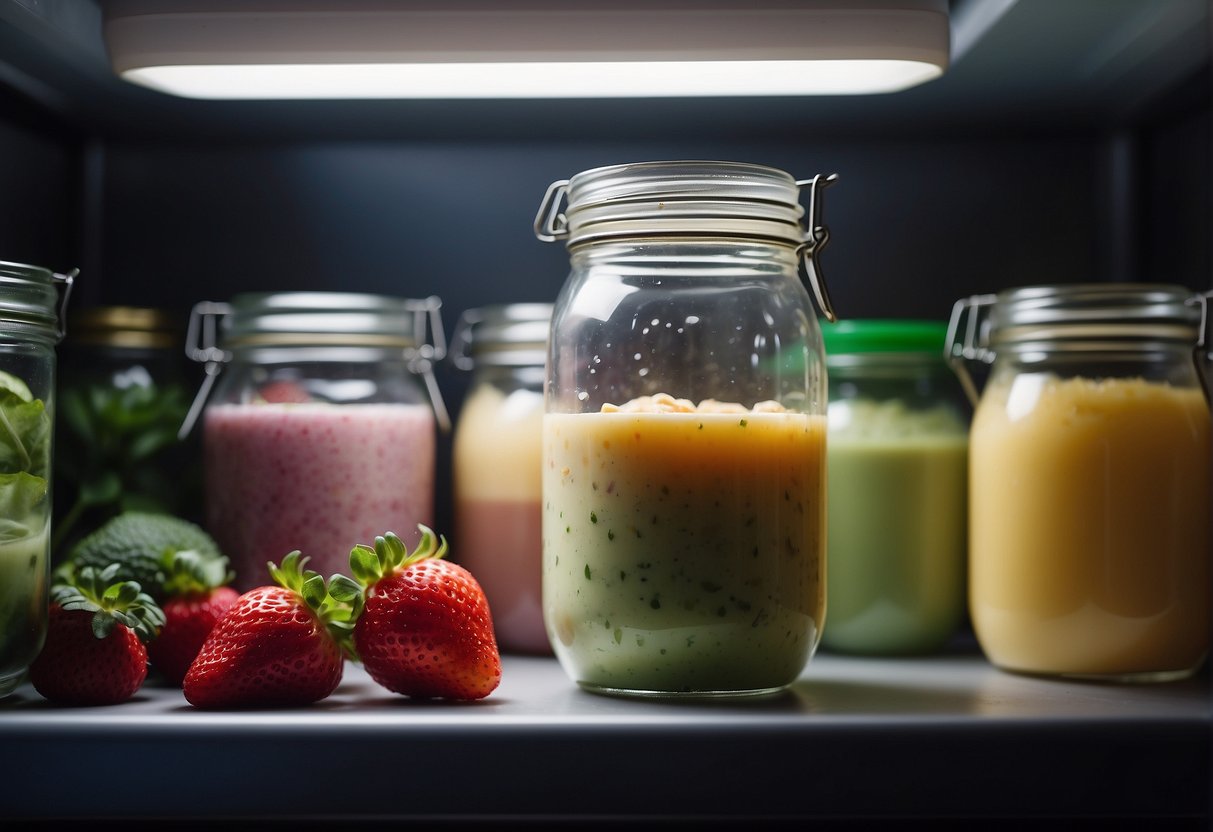
When I’m saving leftover smoothies, I make sure safety and hygiene are top priorities. We’re talking about avoiding any contamination and dealing with any spills or leaks efficiently so I can enjoy my smoothie later without any worries.
Avoiding Contamination
I always use a clean container with a tight-fitting lid to keep air exposure to a minimum. This helps protect my smoothie from harmful contaminants. Before pouring, I make sure my hands are clean, I use clean utensils, and I avoid leaving the smoothie at room temperature for more than two hours.
Dealing with Spills and Leaks
If there’s a spill, I clean it up promptly to prevent bacteria growth. And to avoid leaks, I check the seals on my containers. A leaking container can be messy and increase the chance of contamination. When I’m storing my smoothie, I place it upright to avoid these pesky leaks.
Maximizing Flavor and Consistency
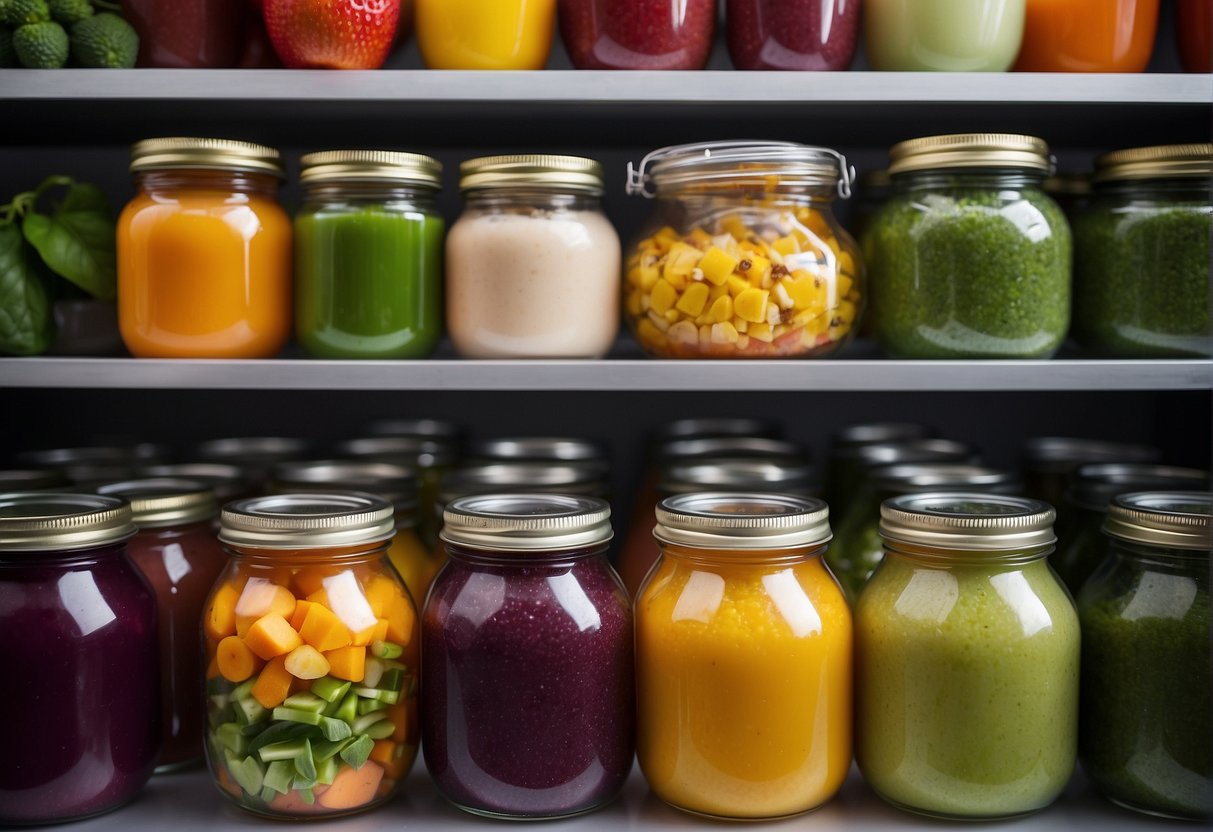
When I’m saving a leftover smoothie, maintaining that just-blended taste and perfect texture is key. Here’s how I make sure my smoothies are as enjoyable later as they are fresh out of the blender.
Choosing Fresh Ingredients
To kick things off, I always start with the freshest fruits and veggies I can find. If I’m whipping up a green smoothie, I’ll pick vibrant greens and a ripe banana or avocado for creaminess. When I want something sweeter, I go for fresh pineapple or berries. The flavor of a smoothie relies heavily on the quality of its ingredients, so I make sure they’re top-notch.
Adjusting Smoothie Consistency
If my smoothie is too thick, I add a bit of almond milk or coconut milk to thin it out without compromising the flavor. For a too-thin consistency, chia seeds work magic without altering the taste much. If I’m craving a dessert-like smoothie, a spoonful of peanut butter or a dash of chocolate makes it rich and indulgent. And if I’m using dairy, I make sure it’s cold to keep the smoothie creamy and thick.
Enhancing Nutritional Value
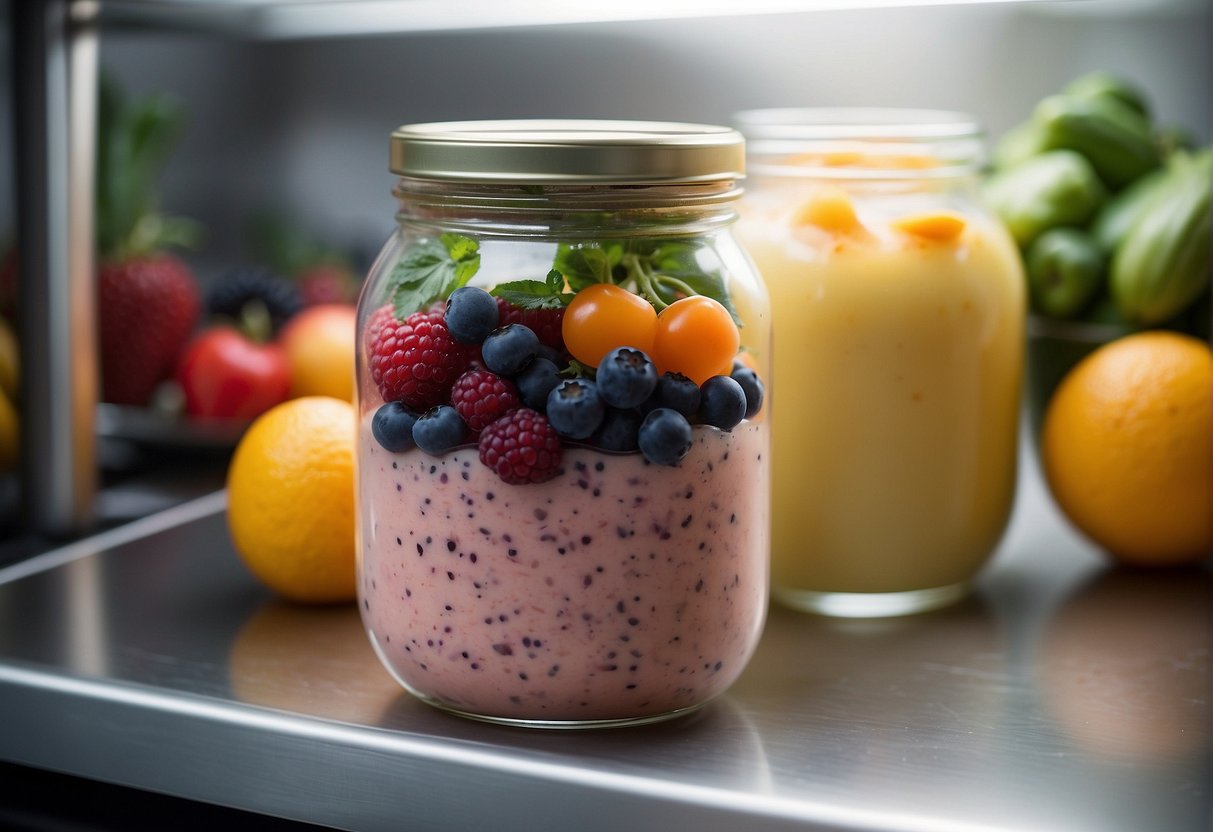
When I want to bump up the health factor of my smoothies, it’s all about choosing the right ingredients and add-ons that maximize nutrients without compromising on taste.
Supplements and Superfoods
I love adding supplements and superfoods to my smoothies for an extra nutritional kick. A scoop of collagen powder isn’t just great for my skin—it adds protein without altering the flavor. For antioxidants, I might throw in a spoonful of chia seeds; they’re tiny, but mighty. My morning blend typically includes a mix of ground flax for those omega-3s and a touch of spirulina for a plant-based boost of vitamins and minerals.
Choosing Nutrient-Dense Fruits and Vegetables
The fruits and veggies I pick are the backbone of the smoothie’s nutritional value. I always aim for a variety of colors—like strawberries for vitamin C and spinach for iron, which are both nutrient-dense. Frozen fruit is a godsend for convenience and gives my drink a creamy texture without diluting the taste like ice would. Throwing in some leafy greens barely changes the flavor but amps up the fiber, vitamins, and minerals. And if I’m feeling a bit decadent, I opt for Greek yogurt. It’s not only rich in protein but also helps me get that perfect smoothie consistency.
Frequently Asked Questions

When it comes to saving my leftover smoothie, I know freshness is key, and I’m always on the lookout for the best tips to keep it tasty. Let me walk you through some of the most common questions I’ve come across.
What’s the best way to keep my smoothie fresh until tomorrow?
To keep my smoothie fresh until the next day, I use airtight containers to limit oxygen exposure which can degrade the nutrients and flavor.
Is it cool to just pop my leftover smoothie into the freezer?
Absolutely, freezing my leftover smoothie is a solid move. It works particularly well when I freeze the smoothie in ice cube trays so I can just re-blend the cubes when ready.
Can my homemade smoothie chill in the fridge for a few days?
Yes, my homemade smoothie can hang out in the fridge, but ideally, I’d consume it within 24 hours for optimal freshness; pushing it to 2-3 days max might risk some flavor loss.
How do I keep my pre-made smoothies tasting awesome later on?
To keep my pre-made smoothies tasting great, proper storage is key. I find that storing them in airtight containers in the fridge or freezer minimizes flavor loss.
Got any tips for preserving my already whipped-up smoothie?
I sure do! To preserve my already whipped-up smoothie, I make sure it’s in a container that lets minimal air inside because air can lead to oxidation and nutrient degradation.
Should I use a plastic container when I stash my smoothie away?
I often go for plastic containers because they’re convenient, but I make sure they are BPA-free. Glass containers are another great option and can be better for keeping my smoothie fresh.
